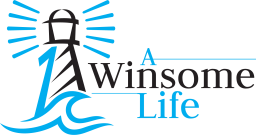Triathlons, as a sport, are growing in popularity, as evidenced by the increasing number of big competitions held all over the world. Not everyone who joins these events aims to win, but everyone does make it a goal to finish the race. For beginners, training for a triathlon is a step-by-step process that starts with a visit to the doctor for a health check.
If you’ve recently found yourself interested in training for a triathlon, be armed with some basic knowledge below.
The Gear
After getting a clean bill of health from the doctor, you’ll need to get some basic equipment to start training for your first triathlon. It might be a good idea to borrow some of these equipment for your first few training sessions so that you will have some time to shop around as they tend to be rather pricey.
Essentially, you’ll need the following:
- Swimsuit, training goggles, a swim cap if you have long hair
- Cycling shorts or chamois if you have it
- Running shoes that fit (cycling shoes are optional)
- A bicycle that suits your preference
- A water bottle for long bike rides
You will also need access to a swimming pool or at least an open body of water to train for the swimming part of the competition. Look for a pool that’s closest to your home and is open for your preferred hours of training. If you plan to train in open waters, be sure to have someone with you in case of any emergency situations and remember to apply some sunscreen!
The Run
Running can be done practically anywhere, but as always, be sure to stay on the safe side of the road or pathway in order to avoid any unintended injuries. Wear reflective gear when running on the road. The goal of training is to work on your endurance and gradually increase the distance (and time) that you’re able to run comfortably.
In the beginning, start with a full minute of walking followed by a full minute of running. Increase your runs by a minute every week while keeping the same minute of walking breaks in between. You should be able to run at a pace that allows for conversation to be maintained without exerting too much effort.
The Swim
Out of the three sports in the triathlon, the swimming portion requires the most technique. Getting the strokes right from the start will help you swim efficiently and not waste energy; hence, consider hiring a swim coach to help you out. When you’re in the water, find your center, or what is commonly known among swimmers as the “sweet spot.” Once you’ve found it, you can then begin to build your endurance comfortably.
Start with a two-hundred-meter training distance, broken down into four-by-fifty-meter laps with short rests in between. As you start improving your technique, slowly work toward being able to swim the whole distance comfortably without stopping for rest in between each fifty-meter lap. As the race date draws nearer, make time to practice open-water swimming.
The Bike
Before you start cycling, take some time to have your bike checked out so that you can be sure that it operates properly, allows you to get a comfortable position, and has all the safety features you’ll need. Wear a helmet that fits you and sunglasses to keep the glare of the sun out of your eyes. Master some bike-maintenance skills like making minor adjustments or changing a flat tire so that you won’t have to deal with the possibility of being stranded during a race.
During training, focus on your cadence and try to keep it between 80 to 100 comfortably. Choose a route that offers some hills in order to give some intensity to your cycling practice and don’t forget to warm up before hitting the trails.
Consider getting a power meter that can measures the power, or torque, that you generate when you turn the pedals. You can check out this 2020 Buyer’s Guide for Cyclists if you are serious about your triathlon training.
Recovery Is Important
Recovery periods are as important as the triathlon training itself and it involves more than simply taking time off to lie on the couch. It consists of in-between days of lower-intensity workouts, lifestyle amendments to include a healthier diet and high-quality sleep, and time for massage, stretching, and compression sessions. During recovery, your body is working on rejuvenation to prepare for more intense training sessions.
Training for a triathlon requires plenty of preparation and a good deal of perseverance. Find a coach or training partner to help you train the right way and keep things fun. More importantly, keep a positive attitude! Every great athlete started somewhere, and you’re only just beginning to work on your fitness potential!

